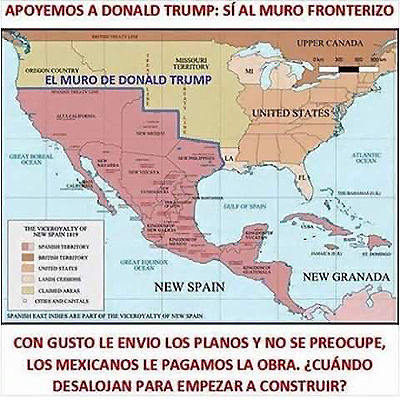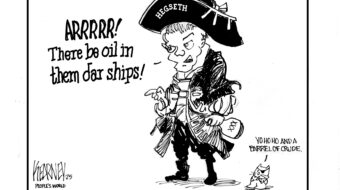
Until the beginning of the 19th century, the West and Northwest of what is now the United States were the sparsely settled home to numerous autonomous Indigenous nations. Some areas along the West Coast, up to San Francisco, had been colonized by Spain and pacified both militarily and by means of a far-flung series of Catholic missions. Technically part of the Kingdom of New Spain, much of this land was really Indian Country that didn’t “belong” to any country. The Louisiana Purchase was an 1803 deal whereby the U.S., up until then an Eastern Seaboard nation, bought 828,000 square miles of land from the French, starting in Louisiana and stretching northwest all the way up to and past what is now the Canadian border. The U.S. continued its expansion westward in its pursuit of its “Manifest Destiny” – to occupy the continent from ocean to ocean.
The border itself was not clearly defined and remained so until Mexico became independent from Spain and entered a period of political instability. Mexico attempted to create a buffer zone to prevent possible invasion from the North. The Mexican government encouraged thousands of their own citizens to settle in Texas, and even offered inexpensive land to U.S. settlers in exchange for populating the area. The influx of people did not provide the defense that Mexico had hoped for, and instead Texas declared its independence in 1836. That independence lasted until 1845 when the United States annexed Texas.
The never-ending American push westward eventually led to the Mexican-American War (1846-48), our first “imperialist” war, which ended with the Treaty of Guadalupe Hidalgo. In that treaty, Mexico lost more than 960,000 square miles of land, 55 percent of its national territory, including what is today California, Arizona, New Mexico, Utah, Nevada and parts of Colorado, Wyoming, Kansas, and Oklahoma. In 1853 the Gadsden Purchase completed the creation of the current U.S.-Mexico border. These purchases left approximately 300,000 people living in the once disputed lands, many of whom were Mexican nationals.
The formerly Mexican land now incorporated into the U.S. is sometimes referred to as “Aztlán,” and has been the intermittent focus of popular aspirations to return that land to its native peoples as an independent nation. As many present-day American citizens of Mexican and Indigenous ancestry like to say, “We didn’t cross the border, the border crossed us.”
Adapted from Wikipedia.
Image: The Spanish text says: Let’s support Donald Trump: Yes to the Border Wall! With pleasure I send you the plan, and don’t worry, the Mexicans will pay for the job. When are we cleared to begin construction? (artist unknown).










